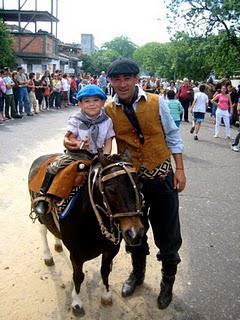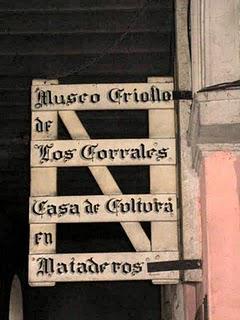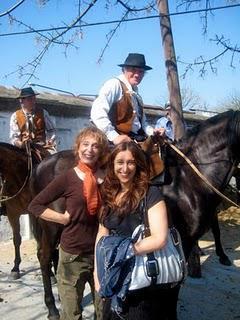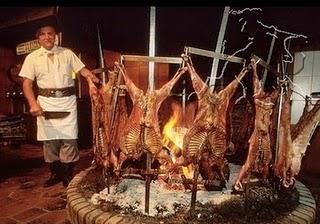 You can see genuine gauchos in Buenos Aires every winter with their animals at the Fair and Exposition in La Rural, and every Sunday from April to December at the Feria de Mataderos.
You can see genuine gauchos in Buenos Aires every winter with their animals at the Fair and Exposition in La Rural, and every Sunday from April to December at the Feria de Mataderos.  At Mataderos you can see them ride in a competition of the sortija, the winner earning a purse. And you can learn more about gaucho history in the Museo Criollo. (Read more Mataderos posts on tangocherie.)
At Mataderos you can see them ride in a competition of the sortija, the winner earning a purse. And you can learn more about gaucho history in the Museo Criollo. (Read more Mataderos posts on tangocherie.) Gauchos also have their own confederation, which you can check out in Spanish on the web.

The gaucho figures strongly in the history and life of Argentina. Centuries ago when there was wild cattle roaming the country, the gaucho made his living by herding and selling them, banding together with his comrades to get a job done, and then going off after his solitary life again. Each man was allowed to round up 12,000 heads. When a cow was killed, the gaucho threw the tongue on the fire and ate that, so as to not ruin the carcass he needed to sell. He lived on beef and mate, and had the company of a "china" (country girl) and his guitar.
When the pampas began to be fenced in and owned by grand estancias in the 19th century, the gauchos had to look for another type of work. Some took jobs at the estancias, and many came to Buenos Aires and had to wear closed toed shoes for the first time in their lives, as the gaucho boots left their toes free. See illustrations of their clothing here.
 Aside from his horse, the gaucho prides himself on his skill with the asado, or barbecue, which truly is an art. He doesn't use charcoal, but wood, and keeps moderating the temperature of the fire by adding and subtracting the coals. He adds coarse salt during the slow cooking to keep the meat from drying out right before he turns it over, bones down. All parts of the animal are eaten, including the fat.
Aside from his horse, the gaucho prides himself on his skill with the asado, or barbecue, which truly is an art. He doesn't use charcoal, but wood, and keeps moderating the temperature of the fire by adding and subtracting the coals. He adds coarse salt during the slow cooking to keep the meat from drying out right before he turns it over, bones down. All parts of the animal are eaten, including the fat.In Argentina, it's only the men who are asadores.
Here is a famous verso gauchesco:
El Gaucho
Mi gloria es vivir tan libre como el pajaro del cielo, no hago nido en este suelo ande hay tanto que sufrir; y naides me ha de seguir cuando yo remonte el vuelo.
